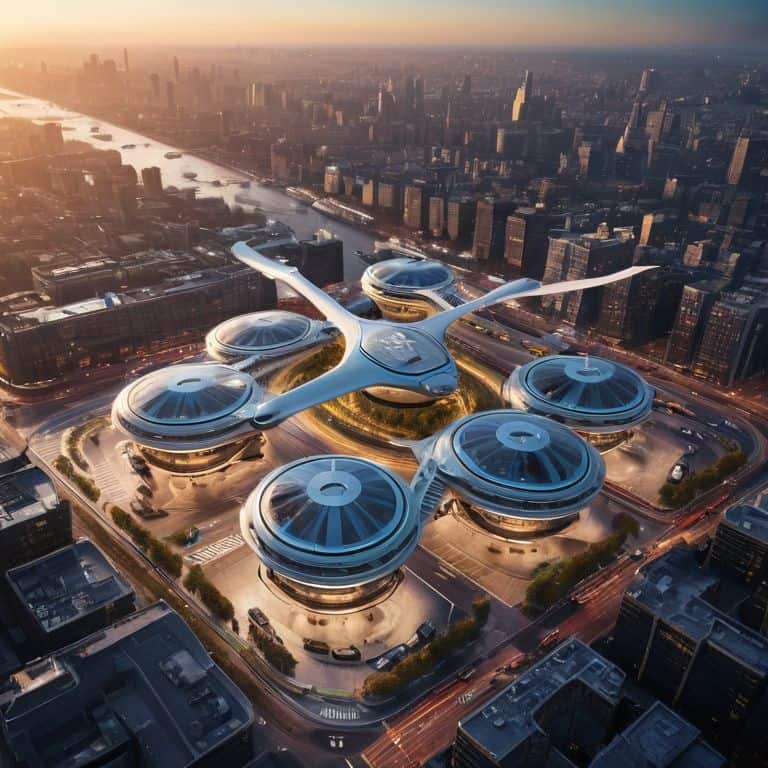I still remember the first time I heard about the potential of hydrogen-powered aircraft. I was attending an aviation conference, and a presenter was touting it as the ultimate solution for reducing carbon emissions. But as I listened to the talk, I couldn’t help but feel a sense of frustration – it seemed like the presenter was glossing over the real challenges and complexities involved. As someone who’s spent years working on operational efficiency and passenger flow, I know that simplistic solutions rarely work in the real world. The truth is, making flight more sustainable and efficient requires a deep understanding of the underlying systems and logistics.
As I delve into the world of hydrogen-powered aircraft, I want to make one thing clear: I’m not here to sell you on a pie-in-the-sky vision of the future. Instead, I’ll be sharing my honest, experience-based assessment of the opportunities and challenges involved. I’ll explore the key benefits and drawbacks of hydrogen power, and what it will take to make it a reality. My goal is to provide you with a nuanced understanding of the potential of hydrogen-powered aircraft, and what it could mean for the future of aviation. By the end of this article, you’ll have a clear sense of what’s possible, and what’s still on the horizon.
Table of Contents
Unlocking Hydrogen Power

As I delve into the world of hydrogen power, I’m excited to explore the hydrogen fuel cell technology for aviation that’s being developed. This innovative approach has the potential to significantly reduce emissions in commercial aviation. One of the key challenges is hydrogen storage solutions for flight, which requires careful design and engineering to ensure safe and efficient storage of the fuel.
Aircraft design for hydrogen power is another crucial aspect of this technology. By rethinking the layout and structure of planes, manufacturers can optimize them for hydrogen fuel cells, leading to increased efficiency and reduced emissions. When comparing sustainable aviation fuels, it’s clear that hydrogen power has a unique advantage in terms of its potential for emissions reduction in commercial aviation.
The debate between electric vs hydrogen aircraft propulsion is an interesting one, with each having its own advantages and disadvantages. However, for long-haul flights, hydrogen power seems to be a more viable option due to its higher energy density. As researchers and manufacturers continue to develop and refine this technology, I’m eager to see the impact it will have on the future of aviation.
Hydrogen Fuel Cells Redefine Flight
As I delve deeper into the world of hydrogen-powered aircraft, I’m excited to explore how hydrogen fuel cells are poised to revolutionize the industry. By converting chemical energy into electrical energy, these cells offer a cleaner and more efficient alternative to traditional fossil fuels.
The impact of hydrogen fuel cells on flight operations is multifaceted, with _reduced emissions_ being a significant advantage. This innovation has the potential to minimize the environmental footprint of air travel, making it a crucial step towards a more sustainable future for aviation.
Sustainable Fuels Comparison Insight
As I delve into the world of sustainable fuels, I find it fascinating to compare the different options available. Sustainable aviation fuels are being explored as a potential replacement for traditional fossil fuels, offering a significant reduction in carbon emissions. However, it’s essential to consider the overall impact of each fuel type on the environment and the aviation industry as a whole.
When examining the various sustainable fuel options, I believe efficiency metrics are crucial in determining the most viable solution. By analyzing the energy density and production costs of each fuel type, we can better understand which ones are likely to make a significant impact on reducing emissions and improving the overall sustainability of air travel.
The Potential of Hydrogen Powered Aircraft

As I delve deeper into the world of hydrogen-powered aircraft, I’m struck by the emissions reduction potential of this technology. By utilizing hydrogen fuel cell technology for aviation, we can significantly decrease our carbon footprint and create a more sustainable future for flight. This is particularly exciting when compared to traditional fossil fuels, and even other alternatives like electric propulsion.
One of the key challenges in implementing hydrogen power is aircraft design. We need to rethink the way we build planes to accommodate hydrogen storage solutions for flight, which requires careful consideration of weight, space, and safety. However, the benefits far outweigh the costs, as hydrogen-powered aircraft could revolutionize the way we travel. I’ve been exploring the sustainable aviation fuels comparison, and it’s clear that hydrogen is a game-changer.
The implications of hydrogen-powered aircraft are far-reaching, from reducing our reliance on fossil fuels to creating new opportunities for electric vs hydrogen aircraft propulsion. As someone who’s passionate about the behind-the-scenes logistics of aviation, I’m excited to see how this technology will streamline ground operations and improve the overall efficiency of air travel. With the right investment and innovation, I have no doubt that hydrogen-powered aircraft will play a major role in shaping the future of commercial aviation.
Aircraft Design for Emissions Reduction
As I delve into the world of hydrogen-powered aircraft, I’m fascinated by the impact of aerodynamic design on reducing emissions. The shape and structure of an aircraft can significantly influence its fuel efficiency, and thus, its environmental footprint. By optimizing aerodynamics, manufacturers can create planes that not only fly faster but also produce fewer emissions.
The use of lightweight materials in aircraft construction is another crucial factor in minimizing emissions. By reducing the overall weight of the plane, less energy is required for flight, resulting in lower fuel consumption and decreased emissions. This subtle yet significant improvement is a testament to the power of innovative design in shaping the future of sustainable aviation.
Electric vs Hydrogen Propulsion
As I delve into the comparisons between electric and hydrogen propulsion, it becomes clear that efficiency gains are a crucial factor in determining the viability of these alternative power sources. Electric propulsion, while promising, currently faces significant challenges in terms of energy storage and weight, making it less suitable for long-haul flights.
In contrast, hydrogen fuel cells offer a more practical solution, particularly for commercial aviation, where the demand for power and range is exceedingly high. By leveraging hydrogen’s high energy density, aircraft can achieve longer flight durations without the need for frequent recharging or refueling, making them an attractive option for the future of sustainable air travel.
5 Key Takeaways for Hydrogen-Powered Flight
- Embrace the Complexity: Hydrogen power isn’t just about the planes, it’s about overhauling the entire logistics and infrastructure of airports to support this new fuel source
- Invest in Modular Designs: Aircraft built with modular components can be easily retrofitted with hydrogen fuel cells, extending their lifespan and reducing electronic waste
- Consider the Total Cost of Ownership: While hydrogen-powered aircraft may have higher upfront costs, their reduced maintenance and fuel costs over time can lead to significant savings for airlines
- Prioritize Ground Handling Innovations: Streamlining ground operations, such as fueling and maintenance procedures, is crucial for the efficient integration of hydrogen-powered aircraft into existing fleets
- Monitor Global Regulatory Frameworks: As the technology advances, keeping pace with evolving regulations and standards will be essential for the widespread adoption of hydrogen-powered aircraft across different regions and countries
Key Takeaways from the Hydrogen-Powered Aircraft Revolution
I’ve identified that hydrogen fuel cells have the potential to significantly reduce emissions and increase efficiency in flight, making them a game-changer for the aviation industry
The comparison between electric and hydrogen propulsion systems reveals that while both have their advantages, hydrogen power offers a more viable solution for long-haul flights and heavier aircraft
By integrating hydrogen power into aircraft design, with a focus on emissions reduction, we can expect a seismic shift in the way we approach sustainable aviation, leading to a cleaner, more efficient, and exciting future for air travel
Redefining Skies
As I see it, the potential of hydrogen-powered aircraft isn’t just about reducing emissions; it’s about revolutionizing the entire flight experience, from quieter engines to more efficient air traffic control, and that’s what gets me excited about the future of aviation.
Oliver Byrne
Embracing the Future of Flight

As I reflect on the potential of hydrogen-powered aircraft, it’s clear that sustainable aviation is no longer a distant dream, but a tangible reality. We’ve explored the benefits of hydrogen fuel cells, compared them to other sustainable fuels, and examined the design implications for emissions reduction. The contrast between electric and hydrogen propulsion has shown us that each has its unique advantages and challenges. By understanding these nuances, we can better navigate the path towards a more environmentally friendly aviation industry.
The journey ahead will be complex, with many logistical hurdles to overcome, but the reward is well worth the effort. As we continue to push the boundaries of what’s possible with hydrogen power, I’m excited to think about the future of flight and how it will shape the world. Imagine a sky where planes not only soar effortlessly but also produce minimal environmental impact. It’s a vision that inspires me, and I believe it should inspire us all to keep innovating, to keep striving for a better tomorrow, where the thrill of flight is accessible to everyone, without compromising our planet’s well-being.
Frequently Asked Questions
How will the high energy density of hydrogen be harnessed to improve flight ranges and reduce fuel stops?
I’m excited about the potential of hydrogen’s high energy density to extend flight ranges. By leveraging advanced fuel cell technology and optimized storage systems, airlines can reduce fuel stops, lowering emissions and increasing efficiency. This could be a game-changer for long-haul flights, making them more sustainable and comfortable for passengers.
What are the primary challenges in scaling up hydrogen fuel cell production to meet the demands of the aviation industry?
Scaling up hydrogen fuel cell production for aviation is a complex puzzle. I’ve seen that the main hurdles include high production costs, limited economies of scale, and the need for more efficient catalysts to reduce material usage.
Can hydrogen-powered aircraft be designed to be compatible with existing airport infrastructure, or will significant investments in new ground handling equipment be required?
I’ve studied this challenge, and the good news is that hydrogen-powered aircraft can be designed to work with existing infrastructure. However, some investments in ground handling equipment, like fueling systems, will still be necessary to support the transition to hydrogen power.



